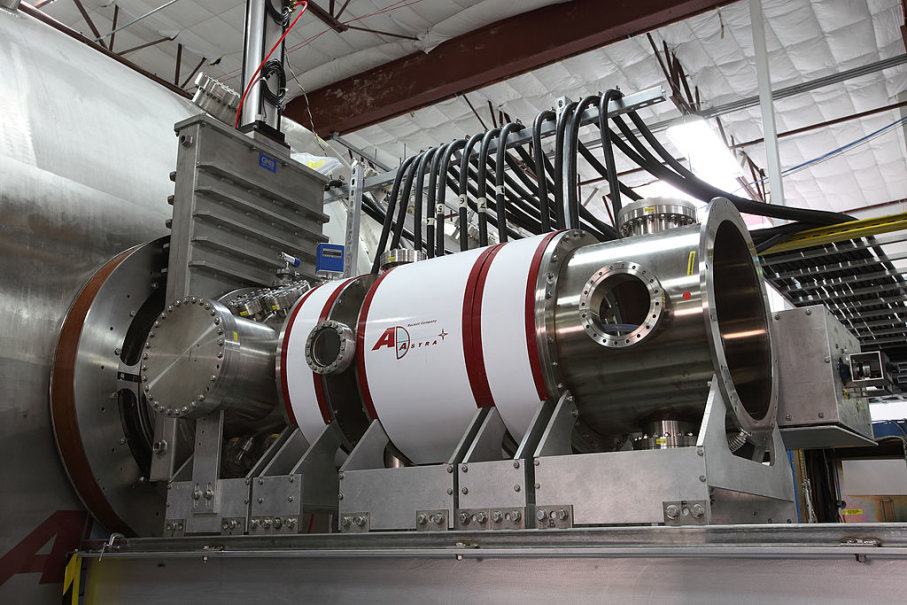How Plasma Rockets Work

Five. Four. Three. Two. One. Blast off! Into the sky shoots a rocket ship, quickly moving beyond our atmosphere and into outer space. In the last half-century, people have gone from just looking up in amazement at the stars glimmering in the night sky to actually living for months at a time on the International Space Station among the celestial bodies. And while humans have set foot on the moon, landing anywhere farther away has been reserved only for unmanned craft and robots.
One place people are very interested in visiting is Mars. Aside from the actual challenges of landing and spending any time in a place as unwelcoming as the red planet, there’s the big hurdle of actually getting there. On average, Mars is about 140 million miles (225.3 million kilometers) from Earth. Even when at its closest point, it’s still some 35 million miles (56.3 million kilometers) away from our planet [source: St. Fleur]. Using the conventional chemical rockets that typically carry us into outer space would take at least seven months to get there — not exactly a short amount of time [source: Verhovek]. Is there any way we might be able to do it faster? Enter the plasma rocket!
In lieu of using conventional rocket fuel, scientists and engineers have turned to the promise of plasma rockets to propel us to the further reaches of outer space. In this type of rocket, a combination of electric and magnetic fields are used to break down the atoms and molecules of a propellant gas into a collection of particles that have either a positive charge (ions) or a negative charge (electrons). In other words, the propellant gas becomes a plasma.
In many configurations of this engine, an electric field is then applied to eject the ions out the back of the engine, which provide thrust to the spacecraft in the opposite direction [source: Zyga]. With this technology optimized, a spaceship could theoretically reach a speed 123,000 mph (198,000 kph) [source: Verhovek]. At that speed, you could get from New York to Los Angeles in one minute!
The world is usually broken down into three states of matter: solid, liquid and gas. When matter is cold, it is solid. As it heats up, it turns into a liquid. When more heat is applied, you get a gas. The story doesn’t end there, however. As you add even more heat, you get — plasma! The extra energy and heat break apart the neutral atoms and molecules in the gas into typically positively charged ions and negatively charged electrons. The charged particles give plasma interesting conductive properties, so plasma technology is used to make all sorts of items we use every day. Computer chips, neon signs, even the metallic coating on the inside of a bag of potato chips are created using plasma technology. And of course, there is the plasma television which uses plasma to release light photons, giving you a color display of pixels on your screen. In fact, 99 percent of ordinary matter in the universe is in the plasma state [source: Charles].
Most stars, including our sun, are made of plasma. If it’s so prevalent in the universe, why don’t we see it much on Earth? Well, actually, we do. The northern and southern lights are created by solar winds. And what are solar winds? Plasma! OK, not everyone is lucky enough to see these spectacular light displays, but you can see plasma in action during another awesome light shows provide by nature: a thunderstorm. As the electricity in lightning flows through the air, it provides so much energy to the molecules in its path that the gases in the lightning trail are actually transformed into plasma.
Plasma technology has also been used in rockets to help us get around outer space, and it holds the most promise for getting humans to places we could only dream of before. These rockets need to be in the vacuum of outer space to work since the density of air near the earth’s surface slows down the acceleration of the ions in the plasma needed to create thrust, so we can’t actually use them for lift-off from earth. However, some of these plasma engines have been operating in space since 1971. NASA typically uses them for upkeep on the International Space Station and satellites, as well as the main source for propulsion into deep space [source: NASA].



 Creators of mankind
Creators of mankind Description of “Tall white aliens”
Description of “Tall white aliens” Where they came from?
Where they came from? About hostile civilizations
About hostile civilizations The war for the Earth
The war for the Earth “Tall white aliens” about eternal life
“Tall white aliens” about eternal life Video: “Nordic aliens”
Video: “Nordic aliens” Aliens
Aliens Alien encounters
Alien encounters The aliens base
The aliens base UFO
UFO Technology UFO
Technology UFO Underground civilization
Underground civilization Ancient alien artifacts
Ancient alien artifacts Military and UFO
Military and UFO Mysteries and hypotheses
Mysteries and hypotheses Scientific facts
Scientific facts


















